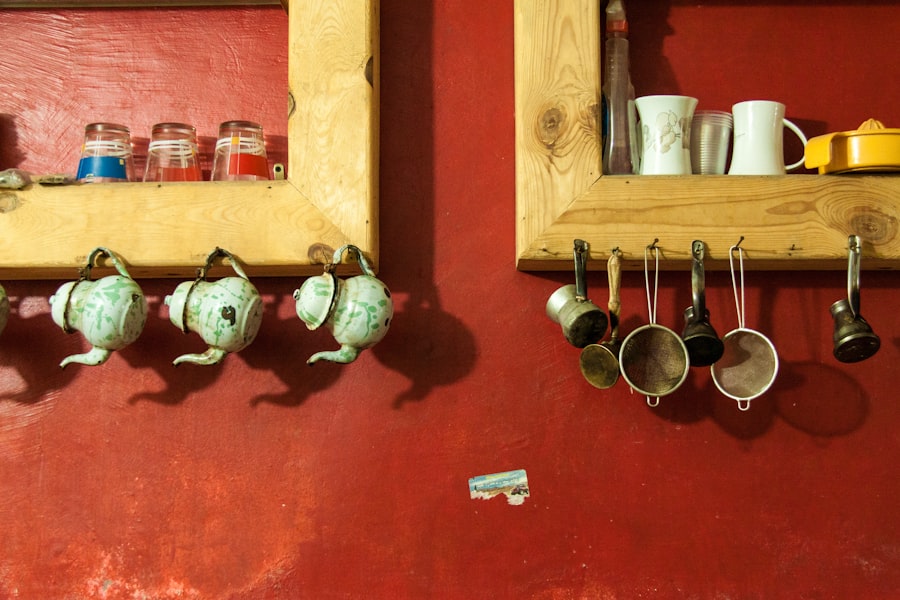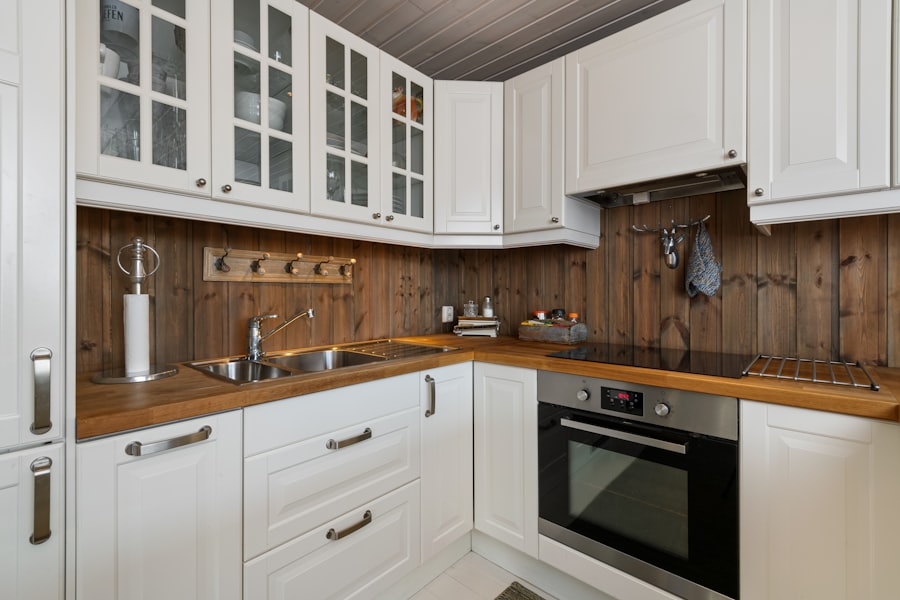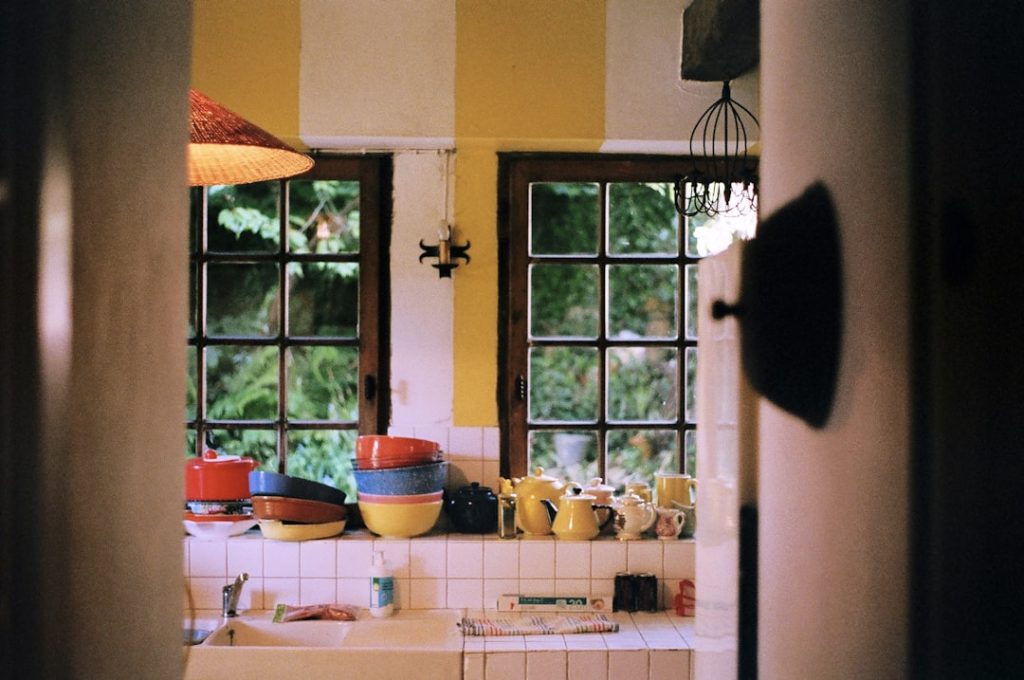Quality craftsmanship is the cornerstone of any successful cabinet-making endeavor. It transcends mere aesthetics, influencing the durability, functionality, and overall value of the finished product. When cabinets are crafted with precision and care, they not only enhance the visual appeal of a space but also ensure that they stand the test of time.
For instance, a well-constructed cabinet can withstand the rigors of daily use, resisting warping, cracking, and other forms of wear that often plague inferior products. This longevity is particularly crucial in high-traffic areas like kitchens and bathrooms, where cabinets are subjected to moisture, heat, and frequent handling. Moreover, quality craftsmanship reflects the skill and dedication of the artisan behind the work.
Each joint, hinge, and finish tells a story of meticulous attention to detail. For example, dovetail joints, often used in drawer construction, are a hallmark of superior craftsmanship. They not only provide strength but also showcase the cabinet maker’s expertise.
In contrast, cabinets made with inferior techniques may feature simple butt joints that compromise both durability and aesthetic appeal. Thus, investing in quality craftsmanship is not merely a financial decision; it is an investment in the integrity and beauty of one’s home.
Key Takeaways
- Quality craftsmanship ensures durability and aesthetic appeal in kitchen cabinets.
- Selecting high-quality materials is crucial for long-lasting cabinet performance.
- Customization allows cabinets to be tailored to individual needs and preferences.
- Modern technology enhances precision and efficiency in cabinet making.
- Sustainable practices are increasingly important for eco-friendly cabinet production.
Choosing the Right Materials for Long-Lasting Cabinets
The selection of materials plays a pivotal role in determining the longevity and performance of cabinets. Solid wood is often regarded as the gold standard due to its natural beauty and resilience. Species such as oak, maple, and cherry are popular choices, each offering unique grain patterns and colors that can enhance any design scheme.
Solid wood cabinets can be refinished multiple times over their lifespan, allowing homeowners to adapt their look without the need for complete replacement. However, solid wood can be susceptible to changes in humidity and temperature, which may lead to expansion or contraction. On the other hand, engineered materials like plywood and MDF (medium-density fiberboard) have gained popularity for their stability and cost-effectiveness.
Plywood, made from layers of wood veneer glued together, resists warping better than solid wood and can be an excellent choice for cabinet boxes. MDF offers a smooth surface ideal for painting and is less prone to cracking than solid wood. However, it is essential to consider the environmental impact of these materials; opting for sustainably sourced wood or low-VOC (volatile organic compounds) finishes can mitigate some of these concerns.
Ultimately, the choice of materials should align with both aesthetic preferences and practical considerations to ensure a lasting investment.
The Art of Customization: Tailoring Cabinets to Your Needs

Customization in cabinet making allows homeowners to create solutions that perfectly fit their unique spaces and lifestyles. Unlike stock cabinets that come in predetermined sizes and styles, custom cabinets can be designed to meet specific dimensions, ensuring optimal use of space. For instance, in a small kitchen where every inch counts, custom cabinets can be built to fit awkward corners or low ceilings, maximizing storage without sacrificing style.
This level of personalization extends beyond mere dimensions; homeowners can select finishes, hardware, and interior configurations that reflect their tastes and functional needs. Furthermore, customization enables the incorporation of innovative storage solutions that enhance organization and accessibility. Features such as pull-out shelves, lazy Susans, or built-in dividers can be seamlessly integrated into custom designs.
For example, a busy family might benefit from a cabinet with a pull-out pantry that allows easy access to snacks and cooking essentials without rummaging through cluttered shelves. This tailored approach not only improves functionality but also elevates the overall user experience within the space. By investing in customized cabinetry, homeowners can create environments that are not only beautiful but also highly practical.
The Role of Technology in Modern Cabinet Making
| Technology | Application in Cabinet Making | Benefits | Impact on Production Time | Accuracy Improvement |
|---|---|---|---|---|
| CAD Software | Designing cabinet layouts and custom pieces | Enhanced design precision, easy modifications | Reduces design time by up to 50% | Improves accuracy by 30% |
| CNC Machines | Automated cutting and shaping of wood components | Consistent quality, reduces manual labor | Speeds up production by 40% | Accuracy within 0.1 mm |
| 3D Printing | Prototyping cabinet parts and hardware | Rapid prototyping, cost-effective testing | Prototype creation in hours instead of days | High precision for small components |
| Laser Cutters | Precision cutting of intricate designs | Clean edges, complex patterns possible | Cutting time reduced by 35% | Accuracy within 0.05 mm |
| Automation & Robotics | Assembly and finishing processes | Improved consistency, reduced human error | Assembly time cut by 25% | Consistent finish quality |
The integration of technology into cabinet making has revolutionized the industry, enhancing both efficiency and precision. Advanced software programs allow designers to create detailed 3D renderings of cabinetry before any physical work begins. This capability enables clients to visualize their projects more clearly and make informed decisions about design elements such as color schemes and layouts.
Additionally, computer-aided design (CAD) systems facilitate precise measurements and specifications, reducing the likelihood of errors during production. Moreover, modern machinery such as CNC (computer numerical control) routers has transformed the manufacturing process. These machines can cut intricate designs with remarkable accuracy and speed, allowing for complex patterns that would be labor-intensive if done by hand.
This technological advancement not only streamlines production but also opens up new possibilities for creativity in cabinet design. For instance, intricate carvings or custom shapes can be produced with ease, enabling artisans to push the boundaries of traditional cabinet making while maintaining high standards of quality.
Sustainability and Eco-Friendly Practices in Cabinet Making
As environmental awareness grows among consumers, sustainability has become a critical consideration in cabinet making. Many manufacturers are now prioritizing eco-friendly practices by sourcing materials from sustainable forests and utilizing low-impact production methods. For example, cabinets made from reclaimed wood not only reduce waste but also add character and history to a space.
This approach appeals to environmentally conscious homeowners who seek to minimize their ecological footprint while still achieving beautiful design. Additionally, advancements in finishes and adhesives have led to the development of low-VOC options that are safer for both the environment and indoor air quality. Traditional finishes often release harmful chemicals into the air; however, eco-friendly alternatives provide similar durability without compromising health standards.
Companies that adopt these sustainable practices often find themselves appealing to a growing market segment that values environmental responsibility alongside quality craftsmanship. By choosing eco-friendly cabinetry options, consumers can contribute to a more sustainable future while enjoying stylish and functional designs.
Understanding the Difference Between Stock, Semi-Custom, and Custom Cabinets

When embarking on a cabinetry project, it is essential to understand the distinctions between stock, semi-custom, and custom cabinets. Stock cabinets are pre-manufactured in standard sizes and styles, making them readily available at lower price points. While they offer convenience and quick installation, stock cabinets often lack flexibility in terms of design options and may not fit unique spaces perfectly.
They are ideal for budget-conscious homeowners or those looking for straightforward solutions without extensive customization. Semi-custom cabinets bridge the gap between stock and custom options. They are built from standard components but offer a range of modifications such as size adjustments, finishes, and hardware choices.
This flexibility allows homeowners to personalize their cabinetry while still benefiting from quicker production times compared to fully custom options. Semi-custom cabinets are particularly appealing for those who desire a tailored look without the extended lead times associated with complete customization. Custom cabinets represent the pinnacle of cabinetry options, providing unparalleled flexibility in design and functionality.
Homeowners can work closely with designers to create unique pieces that cater specifically to their needs and preferences. From intricate detailing to specialized storage solutions, custom cabinets allow for complete control over every aspect of the design process. While they typically come at a higher price point than stock or semi-custom options, the investment often pays off in terms of quality, longevity, and satisfaction.
Tips for Selecting the Best Kitchen Cabinet Maker for Your Project
Choosing the right kitchen cabinet maker is crucial for ensuring a successful cabinetry project. One of the first steps is to conduct thorough research on potential candidates by reviewing their portfolios and customer testimonials. A reputable cabinet maker should have a diverse range of completed projects that showcase their craftsmanship and design capabilities.
Additionally, seeking recommendations from friends or family who have undertaken similar projects can provide valuable insights into reliable professionals. Once you have narrowed down your options, it is essential to schedule consultations with prospective cabinet makers. During these meetings, discuss your vision for the project while paying attention to how well they listen and respond to your ideas.
A good cabinet maker will not only offer suggestions based on their expertise but will also prioritize your preferences throughout the design process. Furthermore, inquire about their production timeline and warranty policies; understanding these aspects will help set realistic expectations for your project’s completion.
The Future of Kitchen Cabinet Making: Trends and Innovations
The future of kitchen cabinet making is poised for exciting developments driven by evolving consumer preferences and technological advancements. One notable trend is the increasing demand for multifunctional cabinetry that maximizes space efficiency in modern homes. As urban living spaces become smaller, innovative designs such as foldable or expandable cabinets are gaining popularity.
These solutions allow homeowners to adapt their kitchens for various activities while maintaining an uncluttered appearance. Another significant innovation is the rise of smart cabinetry integrated with technology for enhanced functionality. Features such as built-in charging stations or touch-activated lighting are becoming more common as homeowners seek convenience in their daily routines.
Additionally, advancements in materials science are leading to more durable finishes that resist scratches and stains while maintaining aesthetic appeal over time. Sustainability will continue to play a pivotal role in shaping future trends within cabinet making as consumers increasingly prioritize eco-friendly options. Manufacturers are likely to invest in research and development aimed at creating sustainable materials that do not compromise on quality or design aesthetics.
As these trends evolve alongside consumer demands, kitchen cabinet makers will need to remain adaptable and innovative to stay competitive in an ever-changing market landscape.



